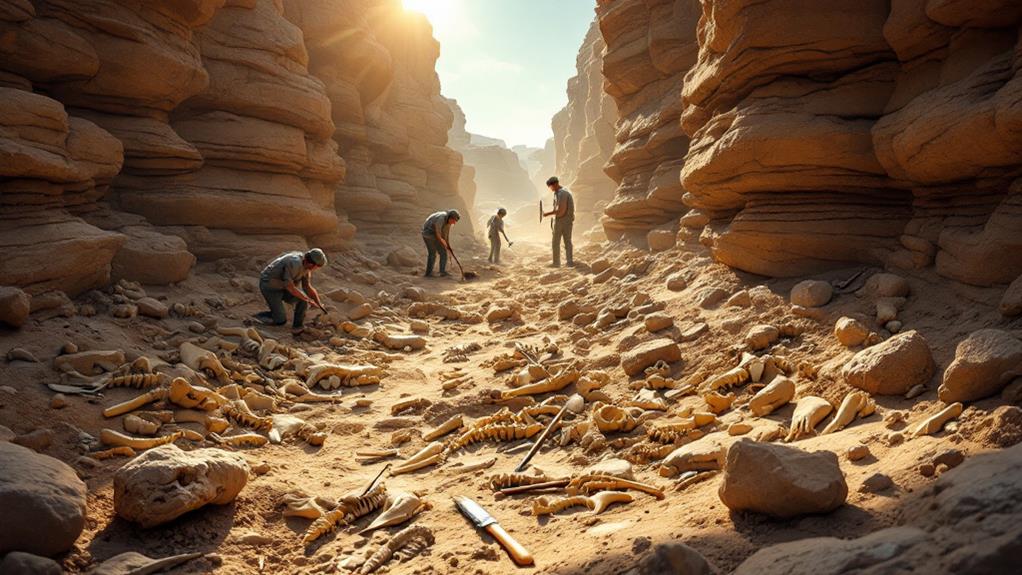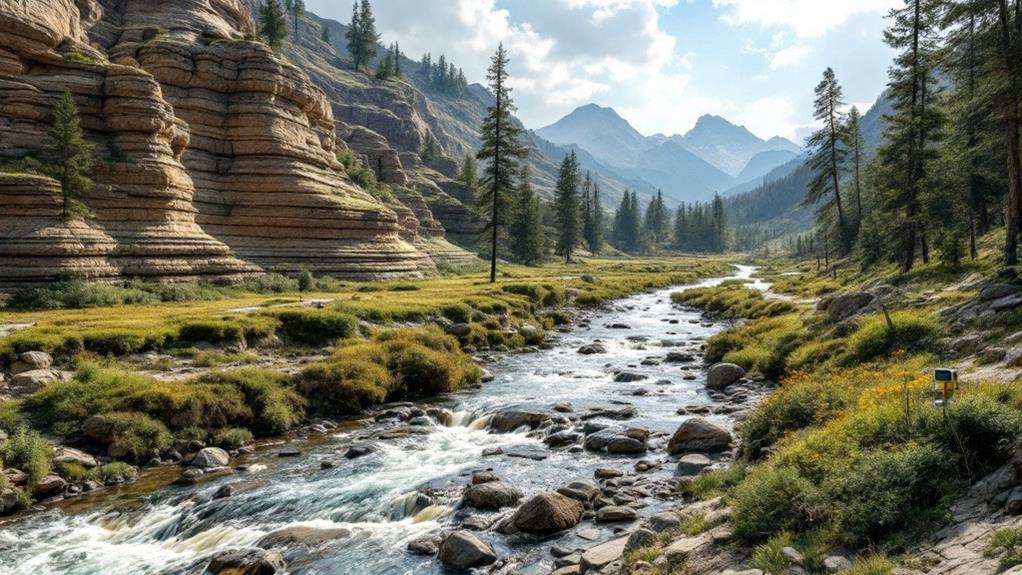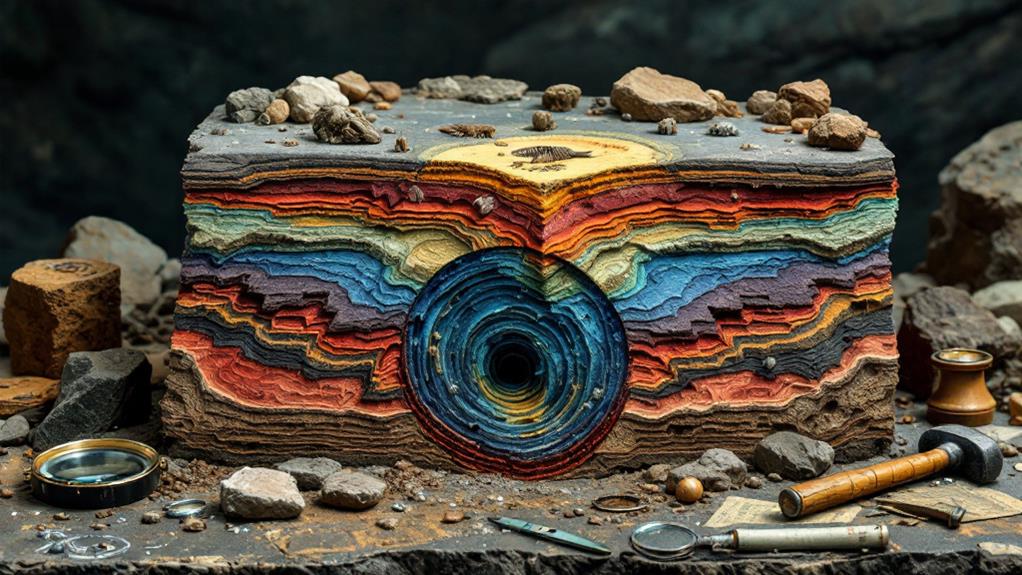The History of Volcanology: The Science of Volcanoes
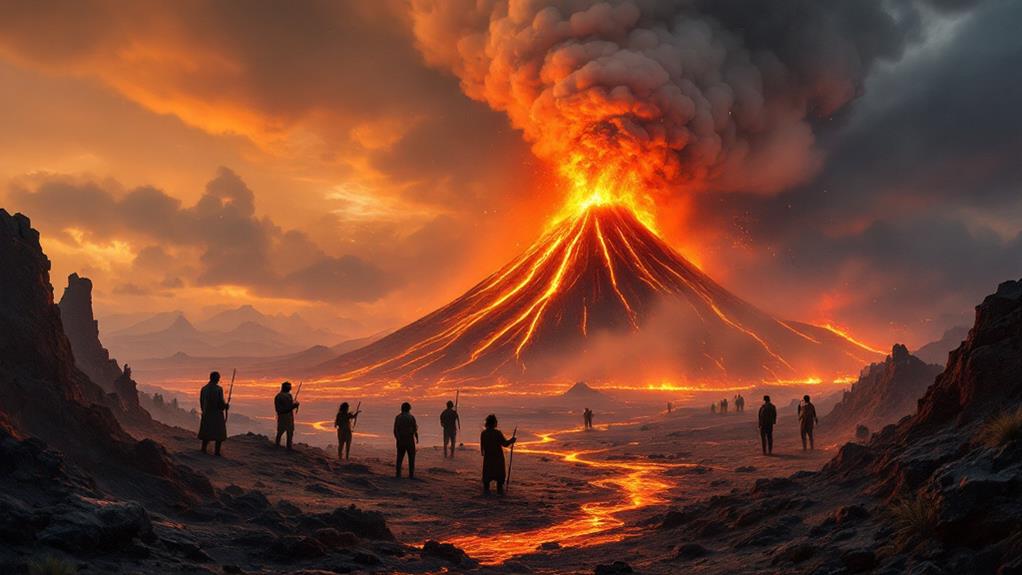
You're about to uncover how volcanology evolved from ancient myths to a thriving scientific discipline. In the past, people saw volcanoes as homes for dragons or gods, like Hawaii's Pele. During the Renaissance, scholars moved beyond superstition, focusing on observation. By the 19th century, figures like Giuseppe Mercalli and Alfred Lacroix laid the foundation for modern volcanology. Today, technology like remote sensing and seismic analysis improves our understanding. You'll learn how predicting eruptions and evaluating societal impacts have become critical parts of the field. There's still so much more to unveil about this fiery science.
Ancient Myths and Legends
Throughout history, volcanoes have sparked the imagination and fear of civilizations, giving rise to an abundance of ancient myths and legends. You've probably heard tales of mythical creatures dwelling within these fiery peaks. Dragons, for instance, were often thought to inhabit the depths of volcanoes, their fiery breath causing eruptions. Volcanoes weren't just seen as natural disasters; they were revered as sacred mountains, home to powerful volcanic deities.
In numerous folklore tales, these deities controlled the fate of humans and the land. For example, in Hawaiian mythology, Pele, the goddess of volcanoes, is both creator and destroyer. She shapes the islands with her eruptions while demanding respect through cultural rituals. People would offer her gifts to appease her fiery wrath and guarantee their safety.
Across different cultures, volcanoes served as both a source of fear and reverence. They held a dual role, acting as symbols of destruction and renewal. By understanding these ancient myths and legends, you gain insight into how past societies made sense of the unpredictable and awe-inspiring power of volcanoes, blending the natural world with mystical beliefs.
Renaissance Observations
During the Renaissance, a newfound curiosity about the natural world led scholars and adventurers to closely study volcanoes. You'll find that Renaissance scientists were driven by the desire to understand and explain the natural phenomena that had long been shrouded in mystery and fear. They took bold steps to observe and document volcanic activity, laying the groundwork for future scientific exploration.
You might be surprised to learn that these scholars began to develop geological theories that moved beyond mythological explanations. They sought to comprehend the forces responsible for volcanic eruptions and the formation of mountains. By closely examining volcanic rocks and landscapes, they started recognizing patterns and attempting to explain them scientifically. For instance, some Renaissance scientists suggested that volcanoes were vents for the earth's internal fires, a theory that hinted at the earth's dynamic nature.
Imagine yourself as one of these intrepid scholars, armed with only rudimentary tools and a keen sense of observation, climbing treacherous slopes to gather data. Your efforts contributed greatly to the shift from mystical interpretations to a more systematic understanding of geological processes. This period set the stage for a more structured approach to studying volcanoes, emphasizing observation and analysis over superstition.
The Birth of Modern Volcanology
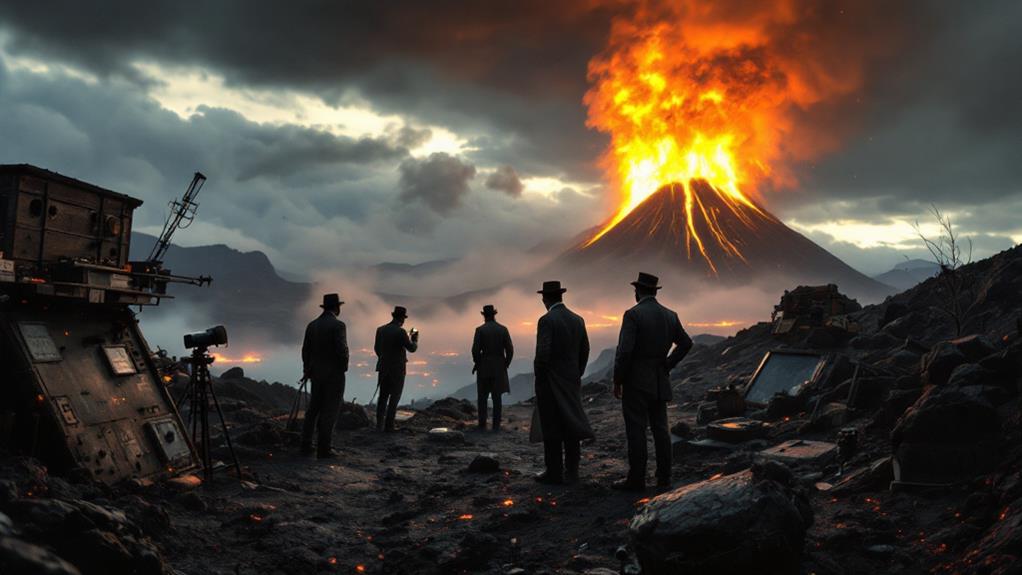
As the 19th century unfolded, the study of volcanoes transformed dramatically, marking the birth of modern volcanology. You'd see the field development take a considerable leap forward as scientists began to approach volcanoes with a systematic and scientific mindset. No longer were volcanoes merely objects of fear and fascination; they became subjects of rigorous study. This period saw key figures like Giuseppe Mercalli and Alfred Lacroix emerge, who greatly influenced the understanding of volcanic activity.
Mercalli, an Italian volcanologist, developed a scale to measure the intensity of volcanic eruptions, which laid the groundwork for future classifications. His work enabled you to understand eruptions not just as isolated incidents but as phenomena with measurable characteristics. Meanwhile, Lacroix, a French geologist, scrupulously studied the eruption of Mount Pelée in 1902. His detailed observations and analyses provided insights into pyroclastic flows, offering you a clearer picture of volcanic behavior.
These key figures and their pioneering work considerably shaped the field development of volcanology. By the end of the 19th century, modern volcanology was established as a scientific discipline, setting the stage for future revelations and methodologies that would deepen our understanding of these powerful natural phenomena.
Advances in Volcanic Monitoring
Through the years, technological advancements have transformed how we monitor volcanic activity, turning once unpredictable eruptions into events we can often anticipate. You can now rely on remote sensing and satellite technology to gather essential information, offering a bird's-eye view of volcanic landscapes. These tools provide real-time data on ground deformation, allowing you to detect subtle shifts in the Earth's surface that might signal an impending eruption.
Seismic analysis plays a fundamental role in understanding volcanic activity. By installing seismometers around volcanoes, you can capture the vibrations caused by magma movement beneath the surface. This data helps you pinpoint potential eruption sites and timeframes. Gas emissions, another significant factor, offer insights into volcanic behavior. Monitoring changes in the composition and volume of gases, like sulfur dioxide, can alert you to changes in volcanic activity.
Thermal imaging is another powerful tool at your disposal. It helps you detect heat changes in a volcano, revealing increased activity that may not be visible to the naked eye. These advancements, combined with eruption forecasting techniques, provide you with a thorough approach to monitoring volcanoes, enhancing safety for communities worldwide.
Predicting Eruptions
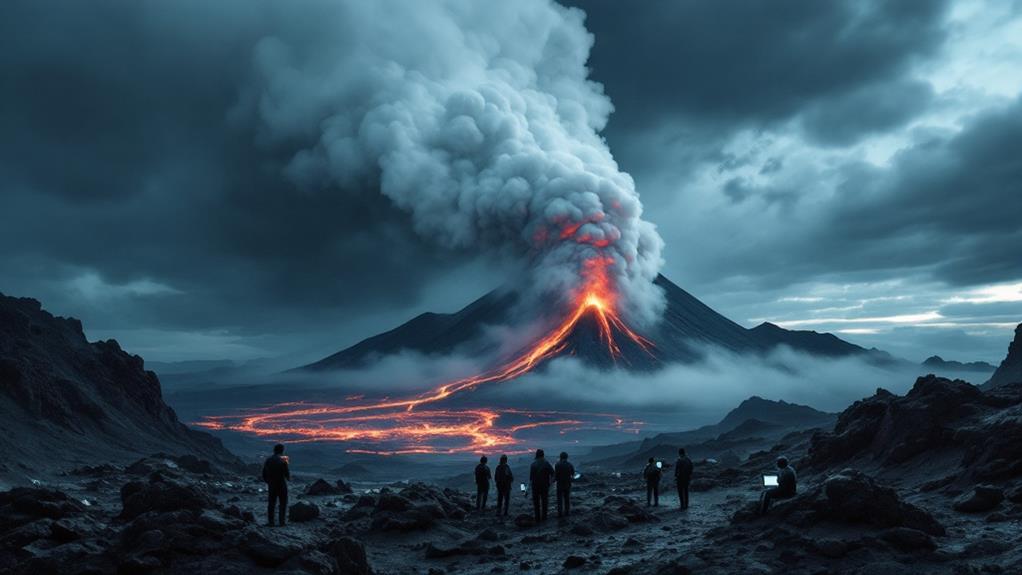
Predicting volcanic eruptions involves synthesizing a wealth of data to anticipate when and where they might occur. You need to monitor several eruption indicators, like seismic activity, ground deformation, and gas emissions. Earthquakes, often preceding eruptions, are key signals. Rising magma can fracture rocks, causing seismic activity. By analyzing these patterns, you can gauge the likelihood of an eruption.
To improve predictions, you should focus on the volcano's history. Past eruptions provide valuable clues about future behavior. Look for patterns and similarities in previous seismic events and eruption sequences. Volcanologists often use seismographs to detect tiny tremors that might indicate magma movement. These tremors, called volcanic tremors, are vital in forming an accurate prediction.
It's important to combine seismic data with other indicators. Ground deformation often signals magma accumulation. Use satellite technology or GPS to measure surface changes. Gas emissions, especially sulfur dioxide, can also reveal magma's ascent. By tracking these emissions, you may predict an impending eruption.
Impact on Society and Environment
Understanding when a volcano might erupt is only part of the equation; knowing the impact on society and the environment is likewise significant. Volcanic hazards like lava flows, ash clouds, and pyroclastic surges can devastate communities in a matter of minutes. It's vital to prepare for these dangers and understand their potential to displace entire populations, disrupt economies, and alter landscapes. Your awareness and readiness can improve community resilience, making it easier to recover from such natural disasters.
You should appreciate the role of environmental restoration following an eruption. Volcanic activity can drastically change ecosystems, but with time and effort, they can often return to a state of balance. Restoration efforts not only revive local flora and fauna but also contribute to the comprehensive health of the planet.
Volcanoes also hold cultural significance for many societies. They're often seen as sacred sites, and their eruptions can be interpreted as spiritual events. Understanding this aspect can help you see how communities integrate volcanic activity into their cultural heritage, shaping their identities and histories.

